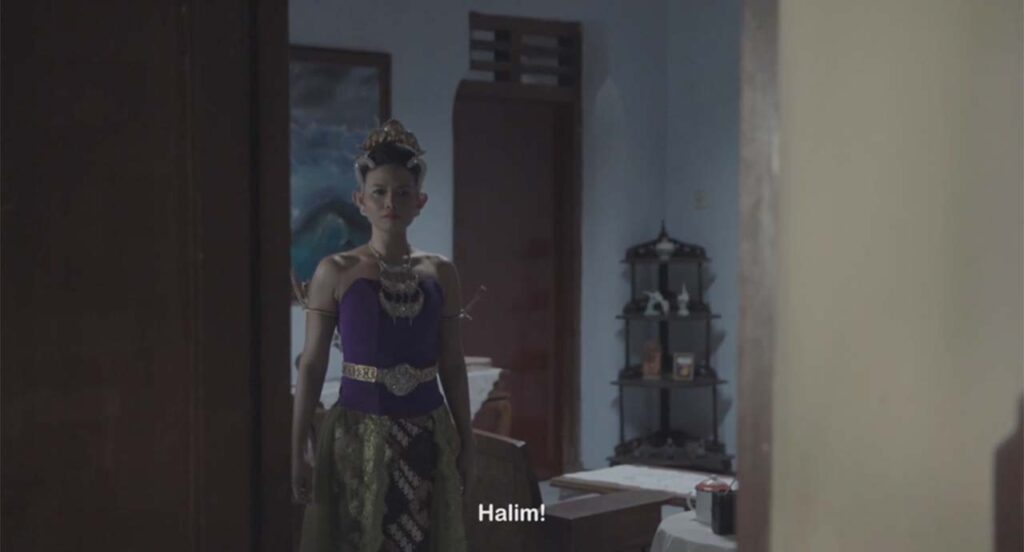Spirit of Surrealism: The Malediction
This article contains spoilers.
Fascinated, I watch the moving images onscreen, savouring the colours, the framing of characters, the smart juxtaposition of images. As the final credits roll, I feel a quiet joy. The Malediction, in its concoction of magical realism and mundane reality, leaves me spellbound. It is a treasure chest of symbols, subtleties and wild imagination, all cannily paired with an undercurrent of critique towards the hypocrisy that can sometime coat religion.
The film tackles the practice of polygamy in the Islamic faith, ultimately revealing how the reasons delivered by our mouths often run contrary to the intentions of our hearts. Halim, our protagonist, justifies his decision to take a second wife as the social part of his worship, but that suggestion is immediately thrown out the door by his wife, who deftly weeds out the true roots behind his decision – human desire, plain and simple. When he ignores the protests of his wife, things go awry and we are led down a twisted road into the psyche of Halim’s mind.
Mubarak first suggests how the female is consistently constrained and bound, before turning the tables on the audience as eventual power is yielded back to them. The film opens with a portrait of a goddess tied up to the back of Halim’s truck, and if that is not enough, supplements the symbolism by putting a couple of sheep on the truck, painting a laughable, ludicrous juxtaposition that subtly hints at the lack of regard Halim has towards women. The female characters are subjected to his voyeuristic gaze, from his admiration of the goddess’ beauty to his wry glances at his young wife during prayer, essentially constraining them to the role of provider of pleasure.


In a particular telling scene, Halim becomes smitten by a young nurse changing his wife’s IV drip. It is disconcerting to watch his eyes roam her figure, and a rising sense of disgust is felt at his thinly spread lips, his raise of the eyebrow. As Mega, Halim’s new wife, enters the frame bearing a basket of fruits, the penny drops. She has been replaced. His affections have turned.
The film, however, surpasses being mere fare for feminist outcry or religious mockery. Rather than stopping at inciting anger and indignation, it goes on to invite us to deal with those feelings, providing an alternative way of seeing through the surreal. Halim becomes plagued with illusions about the various women he meets; his young wife, the perfume sellers he waved off, the nurse he took a fancy to, and even the religious older ladies he gave a ride to.
Though seemingly the expressions of his fantasies, they also represent the haunting presence of the female defiance, the very same defiance his wife first displayed. It is almost a subtle revenge – while he wanted to own and claim women, it is now they with their incessant presence that are the ones in full control over him. When the goddess in the painting comes to life to rebuke him, she represents the pinnacle of female empowerment – essentially stepping out of the role as provider of pleasure, and instead becoming the one to dictate and steer the story.

The film comes full circle at the end, and the exchange of roles between the goddess who now drives the truck full of women and Halim strapped at the back is actually pretty comedic, yet the point is aptly delivered. As the women leave the truck, one returns to rip the taqiyah off his head, essentially stripping him of all righteousness. No alms nor donations can reinstate his morality, it seems. As he is left tied up, shouting in vain, the image is more metaphorical than realistic; he is a prisoner of his own mind.
Mubarak uses the surreal to provide women with a quiet triumph, of subverting conservative religious practices that are void of reason and ultimately exposing the hypocrisy of religious fellows who use Islam as a crutch and a guise to satisfy their own inner desires. The malediction thus is not Halim’s wife’s curse, but the moment he professes with his mouth that his marrying is an act of worship, ultimately heaping a portion of guilt and terror upon himself. It is a deftly made film, powerfully bringing across its critique without ever overwhelming the audience, instead allowing us to view, digest and interpret, while being enamoured by the magical quality of it all.


